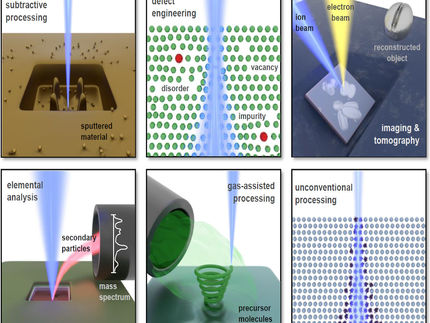Researchers confirm benzene-like electron delocalization of important molecule
UO team's findings could pave way for synthetic compounds useful in drug discovery and materials science
Researchers in the lab of University of Oregon chemist Shih-Yuan Liu have successfully synthesized and structurally characterized boron-nitrogen compounds that are isoelectronic and isostructural to the fundamentally important benzene molecule. Given the appearance of benzene derivatives in biomedical research and materials science, the boron-nitrogen substituted analogues could potentially play a pivotal role in these areas.
In the Journal of the American Chemical Society, Liu's team reports that, by using a structural approach, benzene surrogates known as 1,2-dihydro-1,2-azaborines possess electron-delocalized structures consistent with aromaticity -- a core concept in chemistry. The paper already has drawn praise by other researchers in a story in this week's Chemical & Engineering News.
"The bottom line is that we have synthesized reference compounds designed to be non-aromatic, and through the comparisons of the aromatic molecule with the reference compounds, we were able to unambiguously say that this compound is really electron delocalized in a way consistent with aromaticity," Liu said. "With the results of other research in this field, our findings present a very strong case that 1,2-dihydro-1,2-azaborines are indeed aromatic."
Liu is among molecule-making chemists who are interested in manipulating heterocycles. Aromatic heterocycles play a big role in pharmaceuticals, Liu said, noting that eight of the top ten selling molecules on the market today contain aromatic compounds.
For biomedical purposes, Liu said, boron-containing molecules disguised with other components readily accepted by living tissues could conceivably be used as markers to track the location of the drug. Eventually, he said, targeted drug therapies might deliver very specific tumor-destroying action that leaves healthy cells untouched.
"Our objective is really to first develop the synthetic chemistry of these boron-nitrogen heterocycles, make it accessible to other chemists to study, and ultimately go into applied research to create opportunities in cancer therapies and materials sciences," Liu said. "I believe that we have made substantial progress for expanding the scope of accessible molecules such as this. The methods we have developed here at the University of Oregon are beginning to be quite useful."
Most read news
Topics
Organizations
Other news from the department science

Get the chemical industry in your inbox
By submitting this form you agree that LUMITOS AG will send you the newsletter(s) selected above by email. Your data will not be passed on to third parties. Your data will be stored and processed in accordance with our data protection regulations. LUMITOS may contact you by email for the purpose of advertising or market and opinion surveys. You can revoke your consent at any time without giving reasons to LUMITOS AG, Ernst-Augustin-Str. 2, 12489 Berlin, Germany or by e-mail at revoke@lumitos.com with effect for the future. In addition, each email contains a link to unsubscribe from the corresponding newsletter.

























































